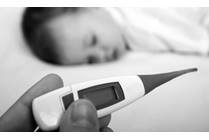Search Results
Viewing: 1121-1130 of 1459 | All

Blog
Fevers: What They Are and Why They Happen
At urgent care, we address a wide variety of problems, but one of the most common concerns we discuss with parents is fever. When a child develops a fever, parents are often scared or worried.

Blog
Building Fine Motor and Play Skills with Household Materials
No need to buy new toys, your home is full of fun! Discover how to transform everyday items like containers, paper rolls, and tissue boxes into creative, hands-on activities that build fine motor skills, imagination, and more.

Condition
Gastroschisis
When the muscles and skin fail to form normally in the abdominal wall, this results in an abdominal wall defect. Gastroschisis is the most common of the abdominal wall defects. Babies born with gastroschisis have a hole in the abdominal wall.

Blog
Negative Behavior as a Form of Communication: How to Be a Trauma-Informed Parent
Every child experiences stress. It’s important to understand children’s stress can become toxic if it’s not acknowledged and addressed.

Specialty
Coronavirus (COVID-19): Information for Patient Families
Learn more about the symptoms of Coronavirus (COVID-19), how you can protect your family, and how Nationwide Children's Hospital is preparing.

Condition
Embryonal Tumor with Multilayered Rosettes (ETMR)
If you are worried about your child’s symptoms or development, reach out to a physician. The sooner your child is diagnosed, the better the chances are of survival.
Article
Clinical Partnerships
We are proud to collaborate and lend our pediatric expertise to several adult hospitals in the state of Ohio.

Condition
Central Nervous System (CNS) Tumor
The central nervous system is made up of the brain and the spinal cord. This system is responsible for sending, receiving and processing information throughout your body, controlling how your body functions. When tumors grow in the central nervous system, they can cause significant symptoms.
Article
Perfusion
Use of the heart-lung machine in cardiac surgery is called cardiopulmonary bypass. Cardiopulmonary bypass provides patients with cardiac and pulmonary support, while bypassing the heart and lungs.

